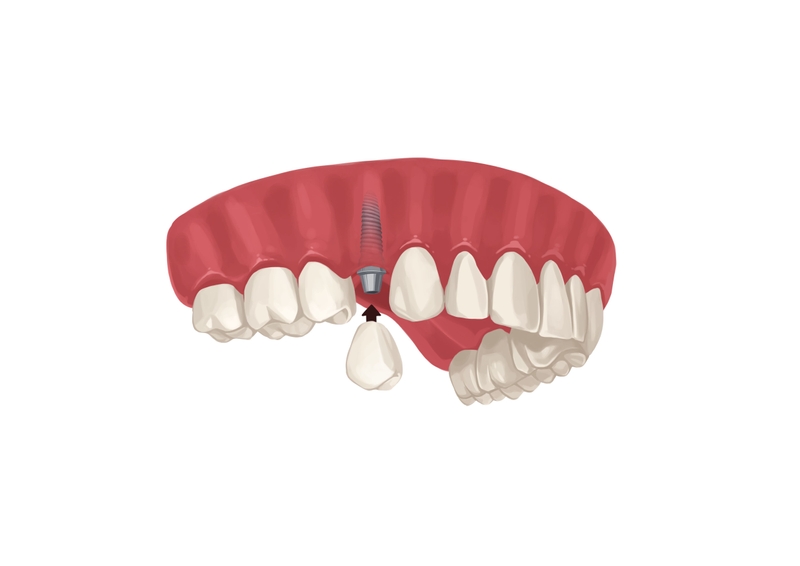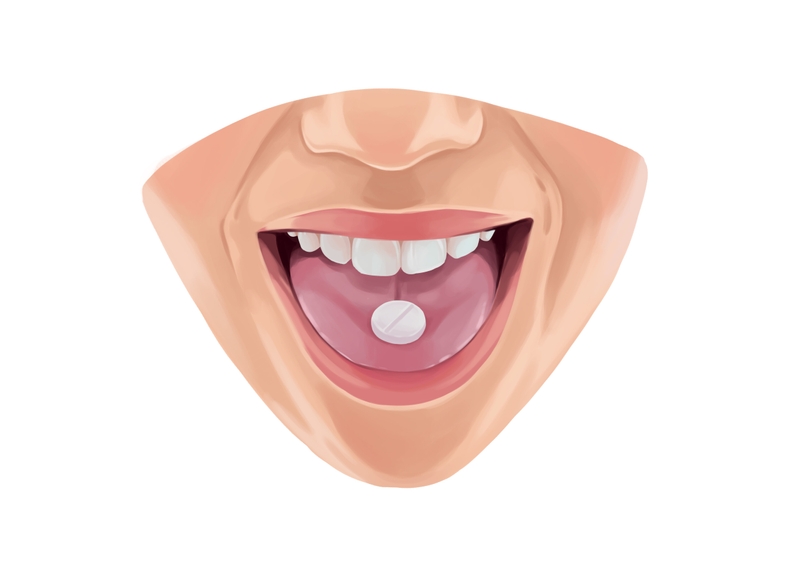- Sinus lift is a dental procedure aimed at filling cavities in the upper jaw. Sinus lift allows dental implantation in patients who do not have enough bone in the upper jaw.
- The procedure takes about 2 hours and may involve sedation. The recovery period lasts between 3 and 10 days.
- During sinus lift, complications such as infection, sinusitis, membrane perforation, graft displacement, and others may occur. The procedure has an over 95% success rate, but proper aftercare is necessary.
Experience the charm of a perfect smile. Use Authority Dental to book an appointment for budget-friendly dental implants. It's fast, easy and trustworthy.
Do you need a sinus lift before getting dental implants? Here's everything you need to know.
When is sinus lifting needed?

Picture by Authority Dental under CC 2.0 license
Otherwise called sinus augmentation or a sinus graft, lifts are necessary if a patient does not have enough bone in the upper jaw. The most common reasons for this include:
periodontal disease, especially with bone loss,
tooth loss,
a congenital disability or chronic condition,
trauma or a complex extraction,
a cyst or tumor, and
a naturally large sinus cavity or a narrow bone ridge.
A sinus lift is most commonly performed to make dental implantation possible, as with bone grafting.
The goal is to fill the maxillary cavity. Maxillary, or maxilla, refers to the upper jaw. The height and position of the wall below the cavity and above the ridge are altered. This procedure increases the bone volume and creates space for the implant. It prevents membrane perforation during placement surgery.
Studies show that maxillary sinus grafts significantly increase the success rate and longevity of dental implants. On the other hand, a sinus lift may delay implant surgery and significantly increase the final cost.
Sinus lift surgery
The sinus lift itself takes no more than 2 hours, averaging 30 minutes. If implant placement is happening at the same time, the whole thing can take up to 6 hours. This may not be possible for every patient, and each situation has to be explored individually.

There are two types of sinus lift procedures. The main difference for the patient is the amount of elevation needed. Both techniques are most often performed under local anesthesia.
Sedation can be used if the patient suffers from low pain tolerance or dental anxiety. The options will be presented to you before preparation for surgery.
Lateral sinus lift
A lateral sinus lift is also referred to as direct or internal. Specialists perform this method more often. It is used in cases where the bone needs to be augmented more extensively.
Here is what the procedure looks like step-by-step:
An anesthetic is administered.
An incision is made in the gum to expose the bone
A small hole is cut, and the sinus membrane is pushed upwards into the cavity.
The empty area is then filled with bone graft material, and the gum is stitched up.
Osteotome sinus lift
An osteotome sinus lift (otherwise called indirect or external) is the less invasive technique. It is used when the bone does not need to be augmented by that much, so by less than 4mm. Patients with polyps, retention cysts, or mucosal thickening are good candidates for this method.
The procedure is carried out in the following manner:
Anesthesia is administered.
The gum tissue is cut open and flapped back.
A socket is made in the bone without breaking through the membrane. About 1-2mm of the membrane is left intact.
The sinus floor is then tapped with an osteotome. This way it becomes lifted.
This approach involves a lower risk of postoperative complications. It can also be less costly than a lateral sinus lift.
Lee explains: "In my practice, I see two main reasons people need this: either they have lost a back tooth decades ago and the bone naturally receded, or their sinus cavity is much larger than average."
"The actual surgical procedure is usually relatively quick—often under an hour—and is focused entirely on gently raising the sinus membrane and packing the space beneath it with bone grafting material," he adds.
Recovery after sinus lift procedure

Picture by Authority Dental under CC 2.0 license
Immediately after the maxillary sinus augmentation, your dentist will place a gauze pad to soak up the blood. You can apply gentle pressure by biting on it lightly. Rinse your mouth and change the pad every hour or so. If the site continues to bleed heavily, use an ice pack until a clot forms.
Sinus lift recovery usually lasts 3-10 days, during which you can stay home. During the healing process, you are likely to experience:
moderate pain,
facial swelling,
bruising, as well as
bleeding from your nose.
Even though your body does most of the work, proper aftercare is an important part of this procedure.
Do not smoke while healing. Blow your nose as little as possible for a week for the best results. Sneezing is a significant risk factor, so if you need to, do it with your mouth open. This helps alleviate pressure on your sinuses.
You may also be prescribed chlorhexidine mouthwash to use after surgery. You may need some OTC pain medicine.
A check-up appointment will be scheduled to ensure the material is integrating with your bone. If the applied stitches are not self-dissolving, they will be removed.
Full sinus lift recovery lasts at least 6 months but may take up to a year. A lateral sinus lift usually heals for longer than an osteotome one.

Symptoms of a sinus lift complication
The sinus lift success rate is just higher than 95%. If you follow proper aftercare, the risks are minimal. Nonetheless, there is always a possibility that something might go wrong.
The most common complications after a sinus lift are:
infection,
sinusitis,
membrane perforation,
graft dislocation,
localized bleeding,
oroantral fistula, and
bone sequestration.
The first two are usually treated by using antibiotics. An infection becomes apparent by significant inflammation, fever, and bleeding that persist for more than 10 days after surgery.
You may have a check-up visit during this time, so your dentist can assess whether anything went wrong. A sinus infection makes itself apparent by swelling, a blocked nose, and pain when you bend down.
Membrane perforation can happen during the surgery. It is important always to choose an experienced surgeon and to follow instructions carefully.
The grafting material can move when you sneeze. If you are prone to allergies, the procedure is likely to be scheduled when they are not acting up. This minimizes the risk.
Oroantral fistula is an opening between the sinus and the mouth that does not heal properly. Bone sequestration occurs when the graft material fails to ossify as expected. Both of these are serious problems and should be dealt with by a professional.
If hemorrhaging, swelling, or significant pain persists for more than 2 days, contact an emergency dental office. Antibiotics or topical nasal corticosteroids might be prescribed to avoid infection and congestion. Otherwise, a check-up visit will determine whether everything is going as it should be.
It is possible to avoid sinus lift surgery by considering zygomatic implants.
Exploring the sinus lift cost
The costs of a sinus lift near you may vary from office to office. A lateral sinus lift price is about $2,500. The average cost of an osteotome sinus graft is $1,500.
The fees below do not include reductions or insurance coverage.
| SINUS LIFT TYPE | AVERAGE COST | COST RANGE |
|---|---|---|
| Lateral | $2,500 | $1,000-$4,000 |
| Osteotome | $1,500 | $500-$3,000 |
The sinus augmentation procedure is expensive. This is unfortunate, as it is usually performed to make dental implants possible, which is an additional huge hit to a patient’s budget. The costs associated with complications that may arise if a patient in need does not have it performed may be even higher, however.
The most significant factors determining the final quote are your location and the dentist's experience. Larger cities have higher prices than smaller areas. Moreover, of course, the more experienced a dental professional is, the more they will charge.
FAQ
Is a sinus lift for dental implants necessary?
As with bone grafting, getting dental implants in the upper arch is the most common reason for sinus lifts. This does not, however, mean that there are always indications to undergo this procedure.
Sinus augmentation is needed if the jawbone has less than 4-6mm in width and 6-8mm in depth. When the alveolar ridge is too thin, implants cannot be placed because there is not enough support. Your dentist will let you know if you need bone graft or sinus lift surgeries during an initial consultation.
Is a sinus lift painful?
Sinus lifting is not a particularly painful procedure. It is most often conducted with no more than a local injection. If you are highly sensitive to pain or if you have dental anxiety, you can ask your dentist about heavier forms of sedation for the incisions.
You might feel discomfort after you leave the office. Unless your dentist prescribes more potent painkillers, OTC products should be enough to relieve any tenderness in the tissues.
Can a sinus lift and implant be done at the same time?
Yes, depending on your anatomy. The alveolar ridge needs to be thick enough. It is more likely with the osteotome method. Not all patients are good candidates for this, however. Only your specialist can provide you with accurate information in your case.
Are there any sinus lift surgery alternatives?
Sometimes, short implants can be inserted instead of the standard ones. This means less space is needed in the jawbone, and sinus lifting can be forgone. This kind of tooth restoration shows a similar success rate and often fewer complications.
Consider looking into the option of zygomatic implants. Your dentist can let you know what is best for you, mainly by examining X-rays of your mouth.
References
- Assessment of alveolar bone loss with high resolution computed tomography
- Maxillary Sinus
- FE-analysis of dental implants with sinus lift
- Direct vs. indirect sinus lift procedure: A comparison
- Lateral Sinus Augmentation: A Simplified Safer Approach
- Osteotome-Mediated Sinus Lift without Grafting Material: A Review of Literature and a Technique Proposal
- Pain intensity and its objective determinants following implant surgery and sinus lifting: A 1-year prospective study
- Complication Rate in 200 Consecutive Sinus Lift Procedures: Guidelines for Prevention and Treatment
- The influence of sinus membrane thickness upon membrane perforation during transcrestal sinus lift procedure
- Accidental Displacement of Dental Implants Into Both Maxillary Sinuses During Surgery
- Osseointegration
Harry Lee, DMD
The term sinus lift can sound intimidating to patients. However, I always emphasize that it is a routine, predictable procedure that lays the necessary foundation for a successful dental implant in the upper back jaw. I tell patients to think of it this way: if their jawbone is currently a dune too shallow for an implant, we are essentially building a retaining wall and filling it with concrete.